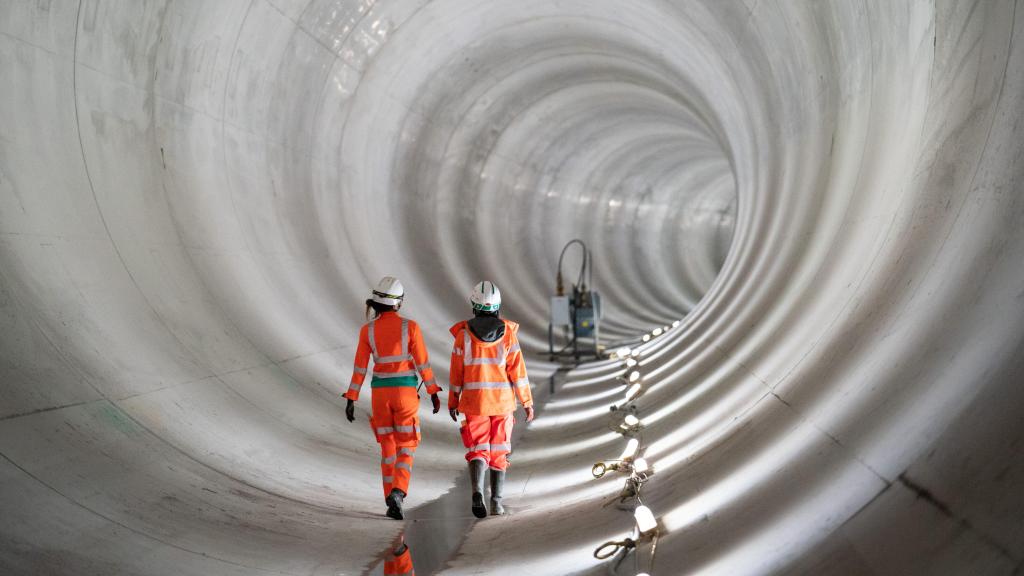Thames Water’s Future Uncertain as KKR Withdraws from Deal
Thames Water faces a challenging future as KKR, its preferred investor, pulls out of a proposed £4 billion equity deal aimed at addressing the company’s financial troubles. This sudden change leaves Thames Water seeking alternatives amid escalating concerns over its significant £19 billion debt burden.
The reasons behind KKR’s withdrawal remain unspecified, but the financial pressures and mixed perceptions of the UK water sector are likely contributing factors. With numerous stakeholders involved, from creditors to regulators and government officials, the environment for investment has become complex and fraught with challenges.
In light of KKR’s exit, Thames Water is pivoting to a new strategy: a debt-for-equity takeover involving its major creditors over the coming months, which may necessitate a loss on their investments. The group of creditors includes 100 financial institutions, such as Elliott Management, known for its robust negotiating stance, alongside various pension funds and asset management firms. While they boast experience in managing turnarounds and substantial holdings in infrastructure, questions persist about their suitability to oversee a crucial public utility.
On Tuesday, the creditor group unveiled their proposed turnaround strategy for Thames Water and expressed optimism about collaborative efforts moving forward. Fortunately, the utility will not experience immediate financial distress, as the £3 billion loan facility from the creditors is being distributed in phases, with the next round expected soon. Nevertheless, there remains a possibility of Thames Water facing temporary renationalization, a consideration that has not been overlooked.
Alistair Carmichael, chairman of the environment, food, and rural affairs select committee, has urged the government to carefully consider the ramifications of these developments on public finances. He emphasized the necessity of ensuring that any takeover serves the public interest, warning that the financial implications could be as high as £100 billion.
Speculation remains about whether CK Infrastructure, the primary stakeholder in Northumbrian Water, might reengage with Thames if the bidding process is reopened. This entity offers experience within the sector, but further legal proceedings and regulatory challenges are expected as negotiations progress. This unfolding situation will likely continue to generate news before any decisive action occurs, whether that be a rescue plan or a shift towards nationalization.
Rail Commuter Experience
Commendations to rail commuters, who tackle the daily challenges of travel on the network. However, recent experiences have raised significant questions about fare structures and ticketing procedures.
On a recent journey to Farnborough in Hampshire, I boarded a train only to hear staff repeatedly cautioning travelers about requiring the correct type of advance ticket to avoid fines. Despite having the appropriate peak-time ticket, the train was sparsely populated. It raises the question: if seats are available and passengers have valid tickets, should the specific train taken be an issue?
A few days prior, I missed a train due to severe traffic leading into London Euston, caused by sudden roadworks. When I attempted to purchase a ticket for the next train, I was informed that I needed to buy a new ticket entirely because I had not canceled my previous one before departure. This situation left me wondering how feasible it is to make such changes amid rush hour congestion.
The complexity of ticketing options, spanning from advanced singles to open returns, remains puzzling. One former industry executive remarked that this intricate fare structure may be designed to confuse consumers, leading them to pay more than necessary.
With the forthcoming establishment of Great British Railways, the government plans to simplify the current ticketing system, aligning with Labour’s commitment to enhance the rail experience. This initiative stands as an opportunity to increase rail use and consequently, revenue.
Overseas Investment in UK Companies
In the UK, we often perceive that British businesses seek investment from America. However, numerous US firms also turn to the UK for capital, albeit less visibly. One notable example is Huntington, a thriving American bank with a robust $23 billion market valuation and an asset base of $210 billion.
An impressive 12 percent of Huntington’s investors hail from the UK, surpassing the sector average of 8 to 10 percent. Notable UK institutions on its investor register include T Rowe Price, Janus Henderson, Schroders, and Royal London. Huntington’s finance chief, Zach Wasserman, emphasizes that these investors are committed to long-term engagement, a contrast to some counterparts in the US. In return, Huntington offers promising growth and solid returns.
This success story is a refreshing counterpoint to the often gloomy narratives surrounding London’s status as a financial hub.




Post Comment